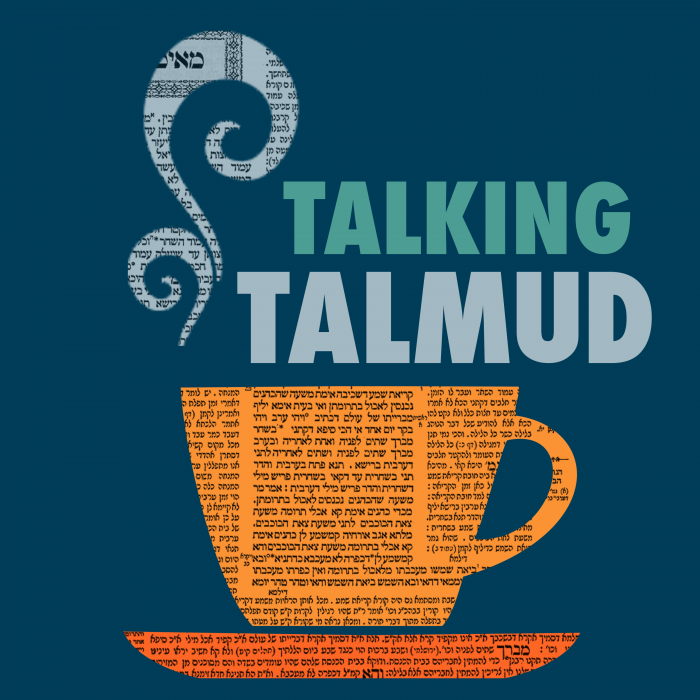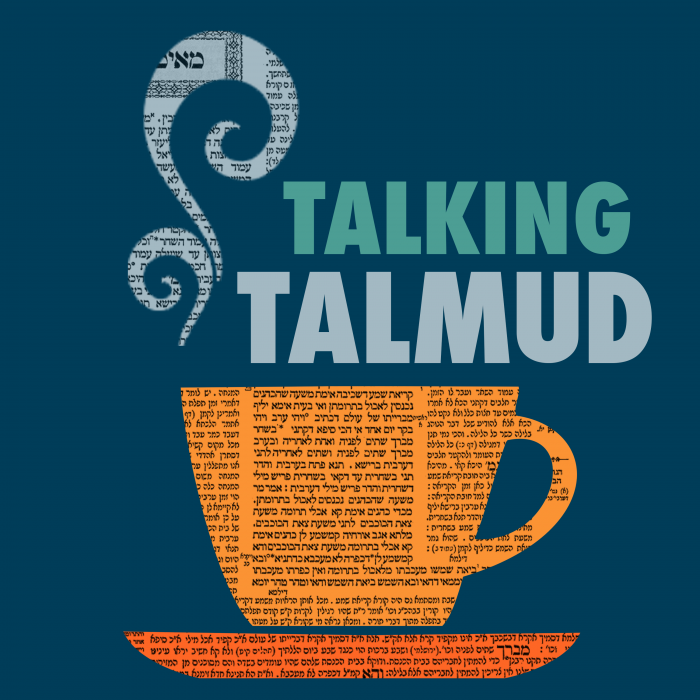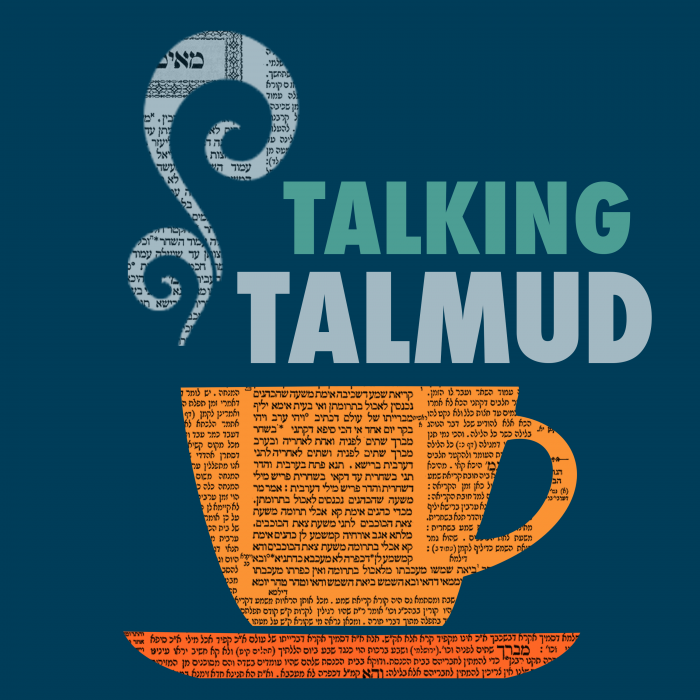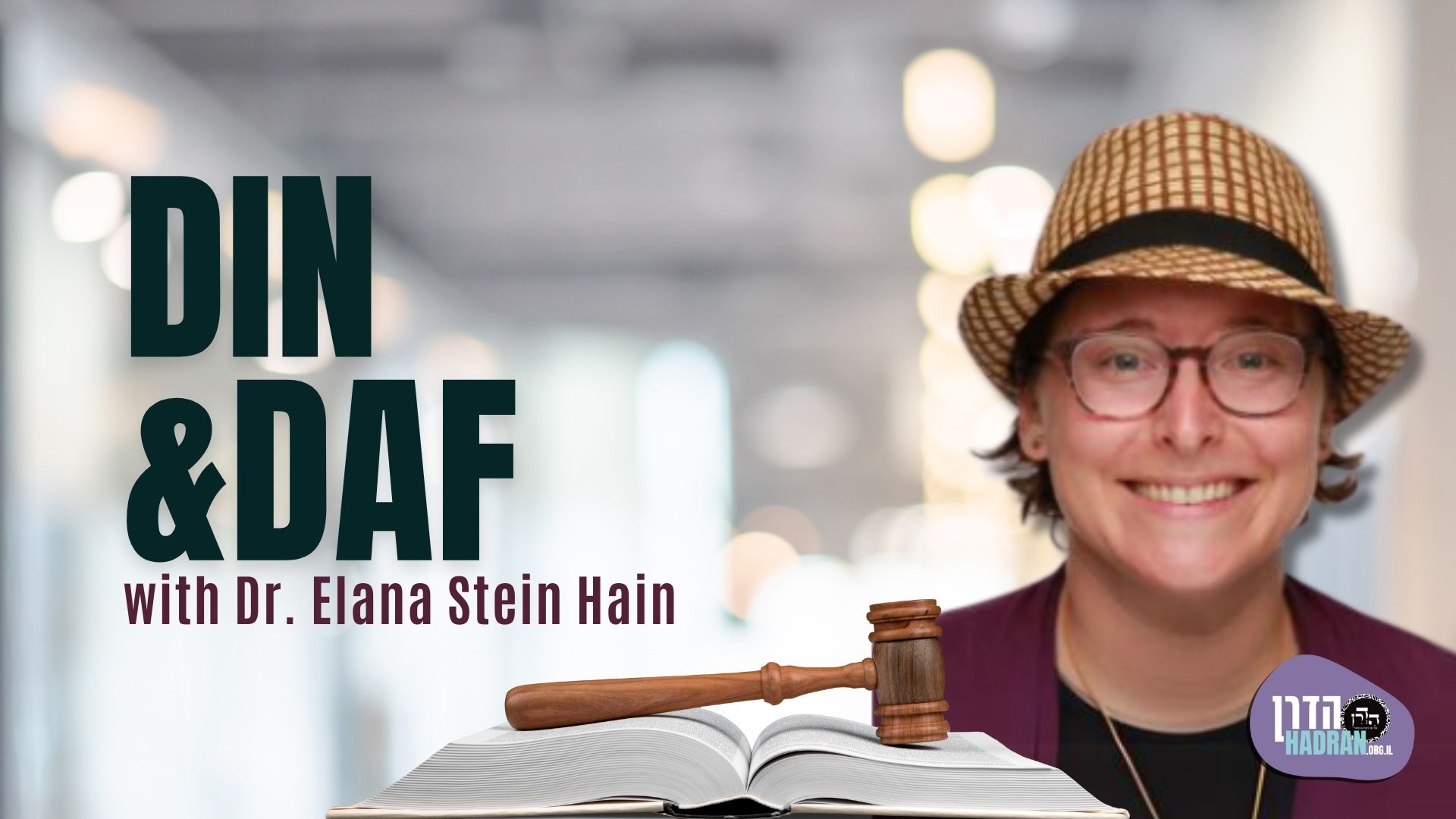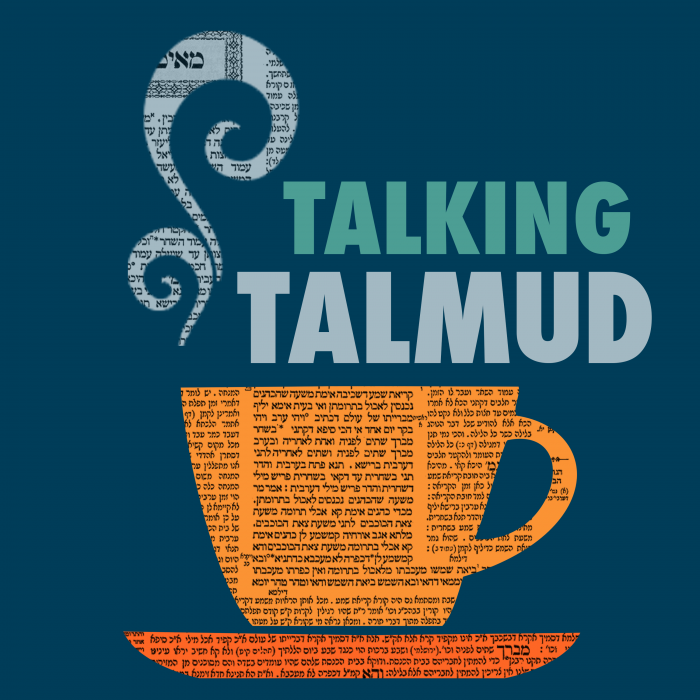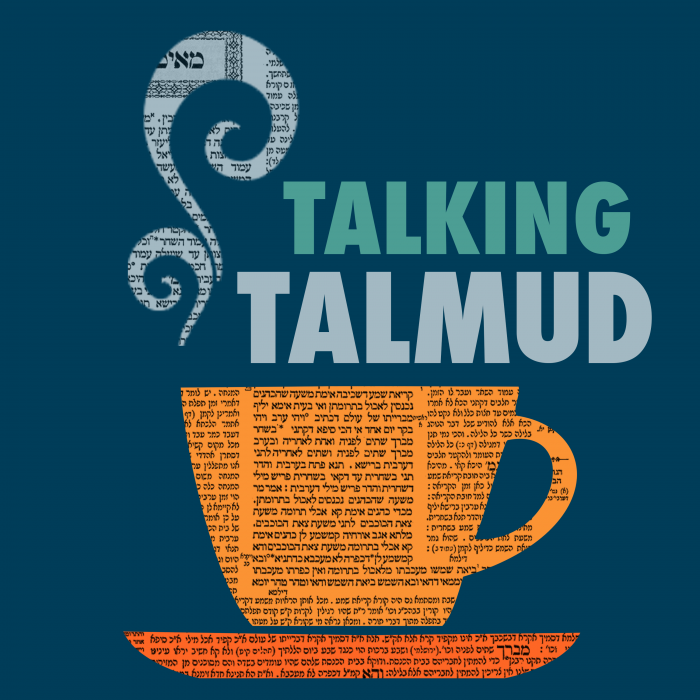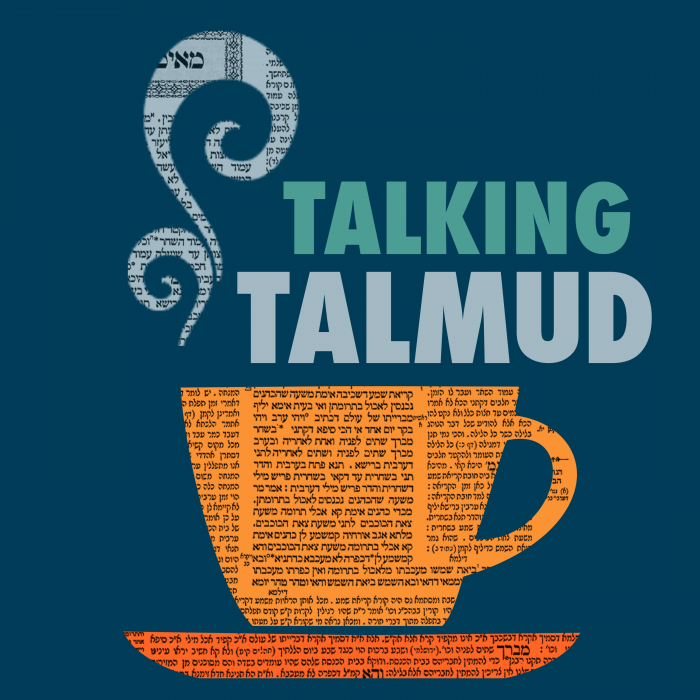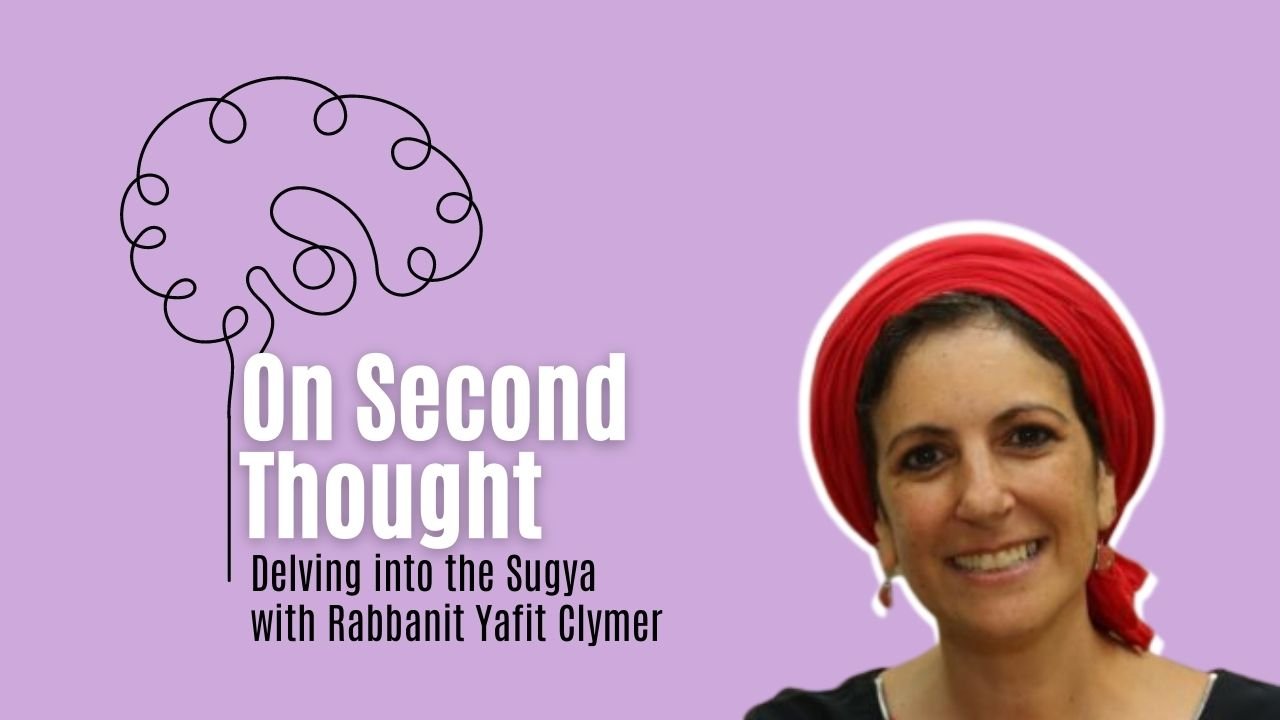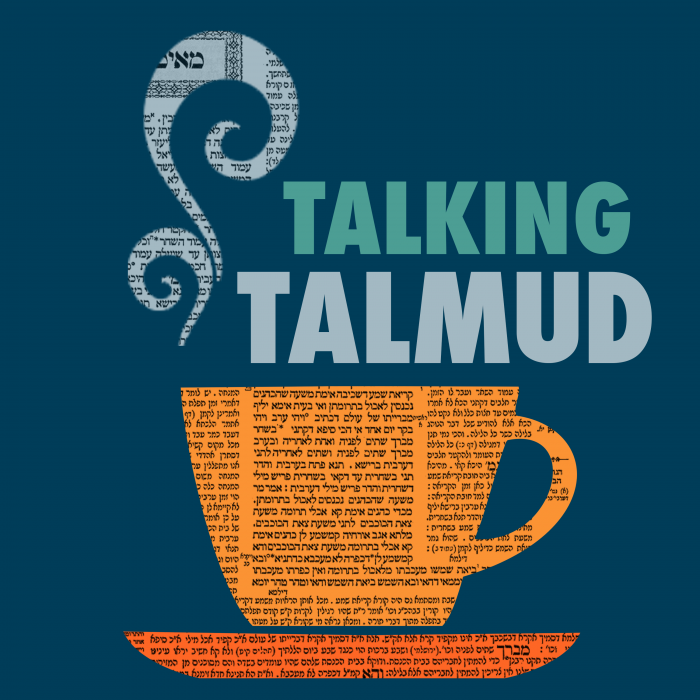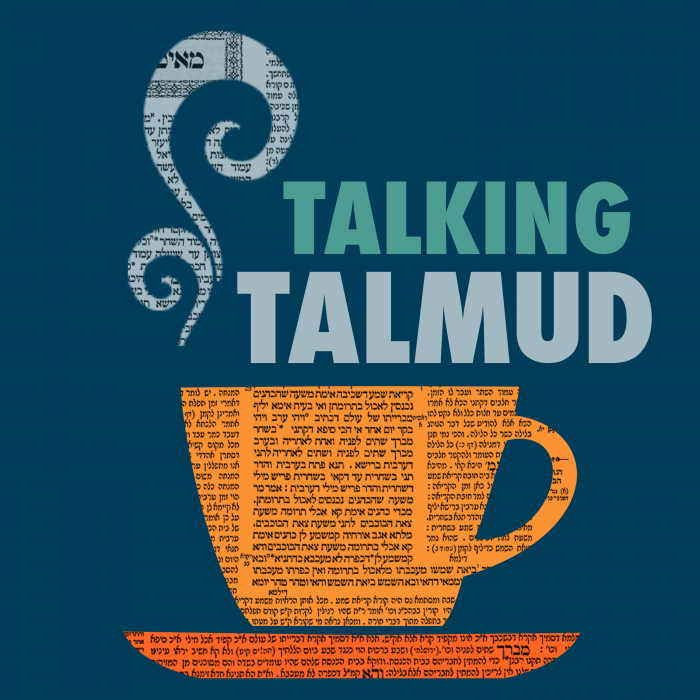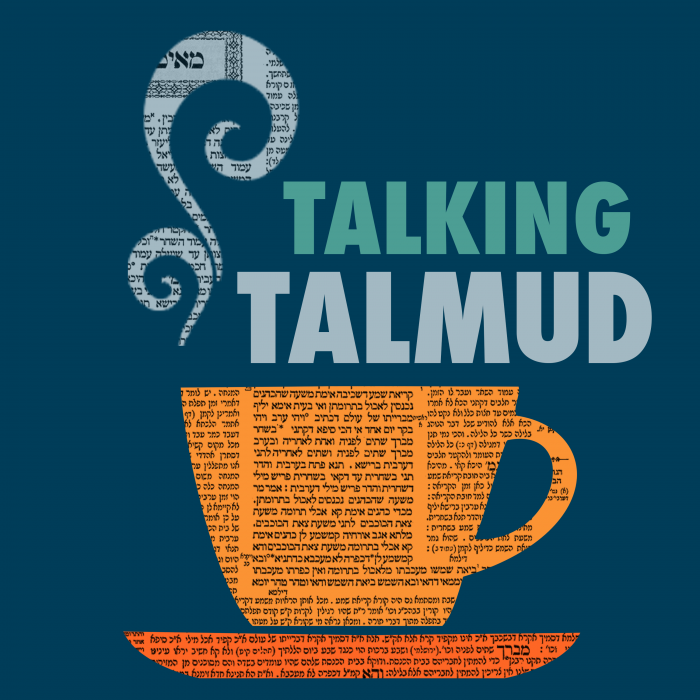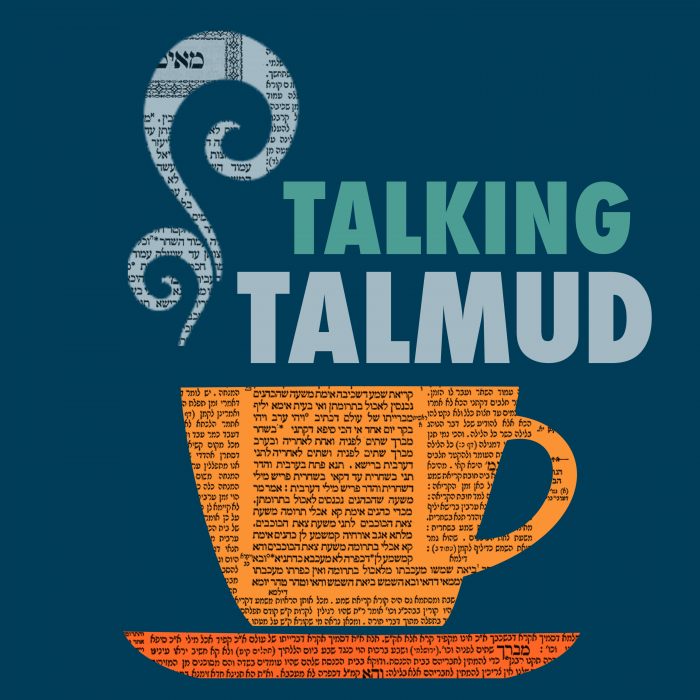The gemara continues to discuss the status of a fetus as regards ability to sanctify, substitute. What are the different opinions regarding one who sanctifies a leg for sacrifice – is the whole animal sanctified on only the leg? If one dedicates the value of the leg to the temple, is it like dedicating the whole animal to the temple, which would mean it is sanctified for sacrifice? If a pregnant animal is sanctified and the fetus is not, can one slaughter it in the temple? If the reverse is the case, can one slaughter it outside the temple?
This month’s learning is sponsored by Beth Balkany in honor of their granddaughter, Devorah Chana Serach Eichel. “May she grow up to be a lifelong learner.”
This month’s learning is dedicated in memory of Rabbi Dr. Raymond Harari z”l, on his 1st yahrzeit. As an educator, principal of Yeshiva of Flatbush, and community rabbi, he inspired thousands with his wisdom, warmth, and unwavering commitment to Torah.
Want to dedicate learning? Get started here:


Today’s daily daf tools:
This month’s learning is sponsored by Beth Balkany in honor of their granddaughter, Devorah Chana Serach Eichel. “May she grow up to be a lifelong learner.”
This month’s learning is dedicated in memory of Rabbi Dr. Raymond Harari z”l, on his 1st yahrzeit. As an educator, principal of Yeshiva of Flatbush, and community rabbi, he inspired thousands with his wisdom, warmth, and unwavering commitment to Torah.
Today’s daily daf tools:
Delve Deeper
Broaden your understanding of the topics on this daf with classes and podcasts from top women Talmud scholars.
New to Talmud?
Check out our resources designed to help you navigate a page of Talmud – and study at the pace, level and style that fits you.
The Hadran Women’s Tapestry
Meet the diverse women learning Gemara at Hadran and hear their stories.
Temurah 11
הָכִי קָאָמַר: מַקְדִּישִׁין אֵיבָרִין וּמְמִירִין בָּהֶן, אֲבָל לֹא מְמִירִין בָּהֶן, וְעוּבָּרִים שֶׁקָּדְשׁוּ בִּמְעֵי אִמָּן אֵין מְמִירִין בָּהֶן.
Rabbi Zeira answered that this is what the mishna is saying: One consecrates certain animal’s limbs, and the sanctity extends to the entire animal. And therefore, one substitutes these animals despite the fact that he initially consecrated only the limbs. But one does not substitute the limbs alone of non-sacred animals for consecrated animals or their limbs, since sanctity cannot be transferred to a limb through substitution. And as for fetuses that were consecrated in their mother’s womb through consecration of the mother, one does not substitute for them as long as they are in their mother’s womb. In other words, the clause of this mishna that refers to consecration is not referring to fetuses at all.
בְּוַלְדֵי קָדָשִׁים, בִּמְעֵי אִמָּן — הוּא דְּלָא עָבְדִין תְּמוּרָה, הָא אַבָּרַאי — עָבְדִי. וְהָא תְּנַן: אֵין הַוְּולָדוֹת עוֹשִׂין תְּמוּרָה! הָא מַנִּי? רַבִּי יְהוּדָה הִיא.
Rabbi Yirmeya objected: If the mishna is referring to the offspring of sacrificial animals, and it is teaching that it is only when they are in their mother’s womb that one may not render a substitute for them, one can infer that once they are outside their mother’s womb, one can render a substitute for them. But didn’t we learn in the next mishna that the offspring born of a consecrated animal do not render a non-sacred animal exchanged for them a substitute? Rabbi Zeira answered: In accordance with whose opinion is this mishna? It is in accordance with the opinion of Rabbi Yehuda, who disagrees and maintains that one can substitute for the offspring.
אִי רַבִּי יְהוּדָה, אֵבָרִין מִי קָדְשִׁי? הָא לְרַבִּי יְהוּדָה לֵית לֵיהּ הָאוֹמֵר ״רַגְלָהּ שֶׁל זוֹ עוֹלָה״ — כּוּלָּהּ עוֹלָה!
Rabbi Yirmeya objected: If the mishna is in accordance with the opinion of Rabbi Yehuda, one encounters a difficulty. According to Rabbi Yehuda, are limbs consecrated in this manner, in that the sanctity extends to the whole animal? But Rabbi Yehuda does not accept that if one says: The hind leg of this animal is a burnt offering, the entire animal is a burnt offering.
אֲמַר לֵיהּ: הָכָא בְּמַאי עָסְקִינַן — בְּדָבָר הָעוֹשֶׂה אוֹתָהּ טְרֵפָה.
Rabbi Zeira said to him: What are we dealing with here? We are dealing with an item whose removal renders it a tereifa, i.e., will cause it to die within twelve months. Rabbi Yehuda’s ruling that the consecration of a limb does not extend to the entire animal applies only to limbs whose removal would not render the animal a tereifa. He concedes that the consecration of limbs which would render an animal tereifa were they removed does extend to the whole animal. In sum, bar Padda’s opinion that fetuses cannot be consecrated has not been refuted.
לֵימָא כְּתַנָּאֵי: הַשּׁוֹחֵט אֶת הַחַטָּאת, וּמָצָא בָּהּ בֶּן אַרְבַּע חַי, קָתָנֵי חֲדָא: אֵינָהּ נֶאֱכֶלֶת אֶלָּא לְזִכְרֵי כְהוּנָּה, וְאֵינָהּ נֶאֱכֶלֶת אֶלָּא לִפְנִים מִן הַקְּלָעִים, וְאֵינָהּ נֶאֱכֶלֶת אֶלָּא לְיוֹם אֶחָד.
§ The Gemara suggests. Let us say that the dispute between bar Padda and Rabbi Yoḥanan is parallel to a dispute between tanna’im, as we learned: If one slaughtered a pregnant animal that was consecrated as a sin offering, and he found inside it a female fetus four months old, which is alive, despite the fact that the mother usually carries its young for five months, one baraita teaches: This animal is treated as a sin offering, and therefore it is eaten only by the males of the priesthood, and it is eaten only within the hangings, i.e., within the Temple courtyard, and it is eaten only for one day and night.
וְתַנְיָא אִידַּךְ: נֶאֱכֶלֶת לְכׇל אָדָם, וְנֶאֱכָלִין בְּכׇל מָקוֹם, וְאֵינָן נֶאֱכָלִין בַּעֲזָרָה. מַאי לָאו תַּנָּאֵי הִיא? דְּמָר סָבַר: קְדוּשָּׁה חָלָה עַל עוּבָּרִין, וּמַר סָבַר: אֵין קְדוּשָּׁה חָלָה עַל עוּבָּרִין.
And it is taught in another baraita that it is treated as a non-sacred animal, which means it is eaten by any person, not only priests, and such animals may be eaten anywhere outside the Temple courtyard, but they may not be eaten in the Temple courtyard. What, is it not correct that the dispute between bar Padda and Rabbi Yoḥanan is a dispute between tanna’im, as one Sage, the tanna of the first baraita, holds in accordance with the opinion of Rabbi Yoḥanan, that fetuses are imbued with sanctity, and one Sage, the tanna of the second baraita, holds that fetuses are not imbued with sanctity, as maintained by bar Padda?
לָא, הָנֵי תַּנָּאֵי בְּהָא קָא מִיפַּלְגִי, דְּמָר סָבַר: וַלְדוֹת קָדָשִׁים בַּהֲוָיָיתָן הֵן קְדוֹשִׁים, וּמָר סָבַר: וַלְדֵי קָדָשִׁים בִּמְעֵי אִמָּן הֵן קְדוֹשִׁים.
The Gemara responds: No, the tanna’im of both baraitot agree that sanctity can apply to fetuses if the animal was consecrated while pregnant. Rather, the baraitot are dealing with an animal that was consecrated and then became pregnant, and these tanna’im disagree about this, as one Sage, in the second baraita, holds that with regard to the offspring of sacrificial animals, only when they come into being, at the time of their birth, are they sanctified. Since this fetus was never born, it is not sacred. And one Sage, in the first baraita, holds that the offspring of sacrificial animals are sanctified already in their mother’s womb, and therefore all the halakhot of a sin offering apply to the fetus immediately.
וְאִיבָּעֵית אֵימָא, חַד תַּנָּא הוּא, חֲדָא מֵהָלֵין מַתְנְיָיתָא — בְּמַקְדִּישׁ בְּהֵמָה וְאַחַר כָּךְ נִתְעַבְּרָה, וַחֲדָא מִנְּהוֹן — שֶׁהִקְדִּישָׁהּ מְעוּבֶּרֶת.
And if you wish, say instead that there is no contradiction between these two baraitot at all, and it is one tanna who taught both of them, in accordance with the opinion of Rabbi Yoḥanan that fetuses are imbued with sanctity. And the second one of these baraitot is referring to a case where one consecrates an animal as a sin offering and it became pregnant only afterward. Since the fetus did not exist at the moment of consecration, it is not sacred. And the first one of the baraitot is referring to a case where he consecrated the animal when it was already pregnant, and therefore its fetus is imbued with its sanctity.
תַּנְיָא, רַבִּי אֱלִיעֶזֶר אוֹמֵר: כִּלְאַיִם, וּטְרֵפָה, וְיוֹצֵא דּוֹפֶן, טוּמְטוּם, וְאַנְדְּרוֹגִינוֹס — לֹא קְדוֹשִׁין וְלֹא מַקְדִּישִׁין. וְאָמַר שְׁמוּאֵל: לֹא קְדוֹשִׁין בִּתְמוּרָה, וְלֹא מַקְדִּישִׁין לַעֲשׂוֹת תְּמוּרָה.
§ It is taught in a baraita that Rabbi Eliezer says: An animal crossbred from diverse kinds, and a tereifa, and an animal born by caesarean section, and an animal whose sexual organs are indeterminate [tumtum], and an animal that is a hermaphrodite [ve’androginos] are neither sacred nor do they sanctify another animal. And Shmuel says, in explanation of the baraita: These animals are not sacred as a substitute, i.e., if one of these was non-sacred it cannot be consecrated as a substitute for a sacred animal. And they do not sanctify another animal to render it a substitute; that is, if one of these animals was sacred, no non-sacred animal can be consecrated as a substitute for them.
וְתַנְיָא, אָמַר רַבִּי מֵאִיר: מֵאַחַר שֶׁאֵינָן קְדוֹשִׁין, הֵיאַךְ מַקְדִּישִׁין? אִי אַתָּה מוֹצֵא אֶלָּא בְּמַקְדִּישׁ בְּהֵמָה וְאַחַר כָּךְ נִטְרְפָה, בְּמַקְדִּישׁ וָלָד וְיָצָא [דֶּרֶךְ] דּוֹפֶן. אַלְמָא קָדֵישׁ וָלָד!
And it is taught in another baraita that Rabbi Meir said: Why is it necessary for Rabbi Eliezer to state that one cannot substitute for these animals? After all, since he has already said that they are not sanctified, how could they sanctify another animal exchanged for them? Rabbi Meir himself responded: You find that these animals can be sacred, but only in specific situations, for example, where one consecrated an animal and subsequently it became a tereifa, or where one consecrated an animal’s offspring and it was then born by caesarean section. One can infer from Rabbi Meir’s statement that evidently an offspring can be sanctified while in the womb, contrary to the opinion of bar Padda.
אָמְרִי: בְּתָם בִּמְעֵי תְמִימָה, אֲפִילּוּ בַּר פְּדָא נָמֵי מוֹדֵי דְּקָדֵישׁ. לֹא נֶחְלְקוּ אֶלָּא בְּתָם בִּמְעֵי בַּעֲלַת מוּם. בַּר פְּדָא סָבַר: כֵּיוָן דְּאִימֵּיהּ לָא מִקַּדְּשָׁא קְדוּשַּׁת הַגּוּף, הוּא נָמֵי לָא קָדֵישׁ. וְרַבִּי יוֹחָנָן סָבַר: הָנֵי כִּשְׁתֵּי בְהֵמוֹת נִינְהוּ, אִימֵּיהּ הִיא דְּלָא מִיקַּדְּשָׁא, אֲבָל הוּא קָדוֹשׁ.
The Sages say in response: In the case of an unblemished animal in the womb of an unblemished mother, even bar Padda concedes that it can be consecrated. Bar Padda and Rabbi Yoḥanan disagree only with regard to an unblemished animal in the womb of a blemished mother. Bar Padda maintains that since its mother cannot be consecrated with inherent sanctity, its offspring is not consecrated either. And Rabbi Yoḥanan maintains: These are considered as two separate animals; it is its mother alone that is not consecrated, but the fetus itself is consecrated.
לִישָּׁנָא אַחֲרִינָא, אֲבָל כִּלְאַיִם וְטוּמְטוּם וְאַנְדְּרוֹגִינוֹס, אִי אַתָּה מוֹצֵא אֶלָּא בְּוַלְדֵי קֳדָשִׁים.
The Gemara cites another version of the above discussion, which cites the continuation of Rabbi Meir’s statement: But with regard to an animal born of diverse kinds, and a tumtum, and a hermaphrodite, you find that they can be consecrated only when they are offspring of sacrificial animals, i.e., a consecrated animal impregnated by an animal of a different species, or whose fetus was a tumtum or a hermaphrodite.
וּכְרַבִּי יְהוּדָה, שֶׁהָיָה אוֹמֵר: הַוָּלָד עוֹשֶׂה תְּמוּרָה. הָלֵין הוּא דְּלָא קָדְשִׁי גּוּפַיְיהוּ, אֲבָל עוּבָּרִין אֲחֵרִים קְדוֹשִׁין!
Rabbi Meir adds: And Rabbi Eliezer holds in accordance with the opinion of Rabbi Yehuda, who would say that the offspring of a consecrated animal renders a non-sacred animal exchanged for it a substitute. These offspring are exceptions, as they are disqualified for the altar. The Gemara infers: It is only for these disqualified offspring that one cannot substitute, as they cannot have inherent sanctity, but other offspring that are fit for the altar, and likewise other fetuses, can be consecrated, contrary to the opinion of bar Padda.
אָמַר אַבָּיֵי: תָּם בִּמְעֵי תְּמִימָה — דִּבְרֵי הַכֹּל קָדֵישׁ גּוּפֵיהּ, אֶלָּא כִּי פְּלִיגִי בִּמְעֵי בַּעֲלַת מוּם, דְּבַר פְּדָא סָבַר: כֵּיוָן דְּאִימֵּיהּ נָמֵי לָא קָדֵישׁ גּוּפַהּ — אִיהוּ נָמֵי לָא קָדֵישׁ אֶלָּא לִדְמֵי, רַבִּי יוֹחָנָן סָבַר: עוּבָּר לָאו יֶרֶךְ אִמּוֹ הוּא, וְאַף עַל גַּב דְּאִימֵּיהּ לָא קָדְשָׁה לְגוּפַהּ — וָלָד מִיהָא קָדֵישׁ לְגוּפֵיהּ.
Abaye said: In the case of an unblemished animal in the womb of an unblemished mother, everyone agrees that the fetus can have inherent sanctity. Rather, when bar Padda and Rabbi Yoḥanan disagree, it is with regard to an unblemished animal in the womb of a blemished mother. As bar Padda maintains: Since even its mother cannot have inherent sanctity, the offspring too can be consecrated only for its value. And Rabbi Yoḥanan maintains: A fetus is considered not the thigh of its mother but a separate entity, and therefore even though its mother’s sanctity is not inherent, the sanctity of its offspring can still be inherent.
אָמַר רַבִּי יוֹסֵי: וַהֲלֹא בְּמוּקְדָּשִׁין, הָאוֹמֵר ״רַגְלָהּ שֶׁל זוֹ״ כּוּ׳.
§ The mishna teaches that according to the Rabbis, one cannot substitute non-sacred limbs for whole consecrated animals, but Rabbi Yosei said that one can substitute in this manner. He claims: But isn’t it so with regard to sacrificial animals, that if one says: The hind leg of this animal is a burnt offering, the entire animal is a burnt offering? The same should apply to substitution.
תָּנוּ רַבָּנַן: יָכוֹל הָאוֹמֵר ״רַגְלָהּ שֶׁל זוֹ עוֹלָה״ תְּהֵא כּוּלָּהּ עוֹלָה? תַּלְמוּד לוֹמַר: ״כֹּל אֲשֶׁר יִתֵּן מִמֶּנּוּ לַה׳ יִהְיֶה קֹּדֶשׁ״ — מִמֶּנּוּ לַה׳, וְלֹא כּוּלּוֹ לַה׳.
The Sages taught: One might have thought that if one says: The leg of this animal is a burnt offering, the sanctity should extend to the whole animal and all of the animal will be a burnt offering. Therefore, the verse states: “And if it is an animal of those that they bring as an offering to the Lord, anything of it that one gives to the Lord, it shall be sacred” (Leviticus 27:9). The verse indicates that the part of it that one gives will be sacred unto the Lord, and not all of the animal will be sacred unto the Lord.
יָכוֹל תֵּצֵא לְחוּלִּין? תַּלְמוּד לוֹמַר ״יִהְיֶה קֹּדֶשׁ״. הָא כֵּיצַד? תִּמָּכֵר לְצׇרְכֵי עוֹלוֹת, וְדָמֶיהָ חוּלִּין, חוּץ מִדְּמֵי אֵבֶר שֶׁבָּהּ — דִּבְרֵי רַבִּי מֵאִיר וְרַבִּי יְהוּדָה.
If so, one might have thought that the consecrated limb may be redeemed and thereby transferred to non-sacred status. Therefore the verse states: “Shall be sacred,” teaching that the limb remains consecrated. How is this possible, i.e., what should one do with the animal? The animal should be sold for the needs of burnt offerings to an individual who will sacrifice the entire animal as a burnt offering, and the payment received for the animal will be non-sacred, except for the payment received in exchange for the limb of the animal that was consecrated. This is the statement of Rabbi Meir and Rabbi Yehuda.
וְרַבִּי יוֹסֵי וְרַבִּי שִׁמְעוֹן אוֹמֵר: מִנַּיִן לָאוֹמֵר ״רַגְלָהּ שֶׁל זוֹ עוֹלָה״, שֶׁכּוּלָּהּ עוֹלָה? שֶׁנֶּאֱמַר: ״כֹּל אֲשֶׁר יִתֵּן מִמֶּנּוּ לַה׳״, כְּשֶׁהוּא אוֹמֵר ״יִהְיֶה קֹדֶשׁ״ — לְרַבּוֹת אֶת כּוּלָּהּ.
But Rabbi Yosei and Rabbi Shimon say: From where is it derived in the case of one who says: The leg of this animal is a burnt offering, that all of it becomes a burnt offering? Since it is stated: “All that any man give of such to the Lord shall be sacred” (Leviticus 27:9), one might have thought that individual limbs can be consecrated. When it says: “Shall be sacred,” this phrase serves to include all of the animal, indicating that it all becomes sacred.
אָמַר מָר: תִּמָּכֵר לְצׇרְכֵי עוֹלוֹת, וְהָא קָמַיְיתֵי בְּהֵמָה מְחוּסֶּרֶת אֵבֶר? אָמַר רָבָא: בְּאוֹמֵר ״הֲרֵי עָלַי עוֹלָה בְּחַיֶּיהָ״.
The Gemara objects: The Master said: The animal should be sold for the needs of burnt offerings. But it is as though the purchaser is bringing an animal that lacks that limb that was consecrated by the previous owner, as his share in the offering consists only of the balance of the animal. Rava says: The baraita does not mean that the animal should be sold to anyone obligated to bring a burnt offering, but specifically to one who says: It is incumbent upon me to bring a burnt offering with all the limbs upon which its life depends. Since the consecrated limb is not one of these, it does not detract from the purchaser’s vow.
אָמַר רַב חִסְדָּא: מוֹדֶה רַבִּי יְהוּדָה בְּדָבָר שֶׁעוֹשֶׂה אוֹתָהּ טְרֵפָה. רָבָא אָמַר: בְּדָבָר שֶׁעוֹשֶׂה אוֹתָהּ נְבֵילָה. וְרַב שֵׁשֶׁת אָמַר: בְּדָבָר שֶׁהִיא מֵתָה.
The Gemara cites a dispute between amora’im: Rav Ḥisda says that Rabbi Yehuda and Rabbi Meir concede with regard to a limb whose removal renders the animal a tereifa. If one consecrated such a limb, the sanctity extends throughout the entire animal. Rava says: Even in such a case, Rabbi Meir and Rabbi Yehuda maintain that the sanctity does not extend throughout the entire animal. Yet, they concede with regard to a limb whose removal renders it an animal carcass, i.e., without which the animal would die so soon that it assumes the status of a carcass. And Rav Sheshet says: They conceded only with regard to a limb whose removal would cause it to die immediately.
מַאי אִיכָּא בֵּין רַב חִסְדָּא לְרָבָא? אִיכָּא בֵּינַיְיהוּ טְרֵפָה חַיָּה. רַב חִסְדָּא סָבַר לַהּ כְּמַאן דְּאָמַר טְרֵפָה אֵינָהּ חַיָּה, וְרָבָא סָבַר לַהּ כְּמַאן דְּאָמַר טְרֵפָה חַיָּה.
The Gemara explains: What difference is there between the opinion of Rav Ḥisda and that of Rava? The difference between them is with regard to the issue of whether a tereifa can survive. Rav Ḥisda holds in accordance with the opinion of the one who said that a tereifa cannot survive but will shortly die. Therefore, Rabbi Meir and Rabbi Yehuda concede that if one consecrates a limb whose removal would render an animal a tereifa, the sanctity applies to the whole animal, since it is a vital organ. And Rava holds in accordance with the opinion of the one who says that a tereifa can survive, and consequently the consecration of such a limb does not extend to the entire animal.
וּמַאי אִיכָּא בֵּין רָבָא לְרַב שֵׁשֶׁת? אִיכָּא בֵּינַיְיהוּ דְּרַבִּי אֶלְעָזָר, דְּאָמַר רַבִּי אֶלְעָזָר: נִיטְּלָה יָרֵךְ וְחָלָל שֶׁלָּהּ — נְבֵילָה. רָבָא סָבַר לַהּ כְּרַבִּי אֶלְעָזָר, רַב שֵׁשֶׁת לָא סָבַר לַהּ כְּרַבִּי אֶלְעָזָר.
The Gemara further explains: And what difference is there between the opinion of Rava and the opinion of Rav Sheshet? The difference between them is with regard to the opinion of Rabbi Elazar, as Rabbi Elazar said: If the thigh, i.e., the hind leg of the animal, and its recess were removed, the animal is considered a carcass and imparts ritual impurity even while still alive. Rava holds in accordance with the opinion of Rabbi Elazar, and therefore he maintains that according to Rabbi Meir and Rabbi Yehuda, if one consecrates its thigh and its recess the sanctity extends throughout the animal, as it is a vital limb. But Rav Sheshet does not hold in accordance with the opinion of Rabbi Elazar, and therefore the sanctity in such a case does not extend to the entire animal.
מֵיתִיבִי: אָמַר רַבִּי: נִרְאִין דִּבְרֵי רַבִּי יְהוּדָה בְּדָבָר שֶׁאֵין הַנְּשָׁמָה תְּלוּיָה בּוֹ, וְדִבְרֵי רַבִּי יוֹסֵי בְּדָבָר שֶׁהַנְּשָׁמָה תְּלוּיָה בּוֹ. לָאו מִכְּלָל דִּפְלִיג עֲלֵיהּ דְּרַבִּי יְהוּדָה?
The Gemara raises an objection: Rabbi Yehuda HaNasi said: With regard to the dispute between Rabbi Yehuda and Rabbi Yosei, the statement of Rabbi Yehuda, that the sanctity does not extend to the whole animal, appears correct with regard to a limb upon which the animal’s life does not depend, and the statement of Rabbi Yosei appears correct with regard to a limb upon which the animal’s life depends. May one not conclude by inference from the statement of Rabbi Yehuda HaNasi that Rabbi Yosei disagrees with Rabbi Yehuda even with regard to a limb upon which the animal’s life depends, contrary to the statements of the amora’im above?
בִּשְׁלָמָא נִרְאִין דִּבְרֵי רַבִּי יְהוּדָה בְּדָבָר שֶׁאֵין הַנְּשָׁמָה תְּלוּיָה בּוֹ, מִכְּלָל דִּפְלִיג עֲלֵיהּ דְּרַבִּי יוֹסֵי. אֶלָּא נִרְאִין דִּבְרֵי רַבִּי יוֹסֵי בְּדָבָר שֶׁהַנְּשָׁמָה תְּלוּיָה בּוֹ — לָאו מִכְּלָל דִּפְלִיג עֲלֵיהּ דְּרַבִּי יְהוּדָה? וּתְיוּבְתָּא דְּכוּלְּהוּ!
Granted, Rabbi Yehuda HaNasi’s comment: The statement of Rabbi Yehuda appears correct with regard to a limb upon which the animal’s life does not depend, is not difficult, as one learns by inference only that Rabbi Yehuda disagrees with Rabbi Yosei with regard to such a case. But when he says that the statement of Rabbi Yosei appears correct with regard to a limb upon which the animal’s life depends, must one not conclude by inference that Rabbi Yosei disagrees with Rabbi Yehuda with regard to this case as well? And this is apparently a conclusive refutation of all the opinions of the amora’im cited above, who maintain that Rabbi Yehuda concedes with regard to vital organs.
לָא, חַסּוֹרֵי מִיחַסְּרָא וְהָכִי קָתָנֵי: נִרְאִין דִּבְרֵי רַבִּי יוֹסֵי לְרַבִּי יְהוּדָה בְּדָבָר שֶׁהַנְּשָׁמָה תְּלוּיָה בּוֹ, שֶׁאַף רַבִּי יְהוּדָה לֹא נֶחְלַק עָלָיו אֶלָּא בְּדָבָר שֶׁאֵין הַנְּשָׁמָה תְּלוּיָה בּוֹ, אֲבָל בְּדָבָר שֶׁהַנְּשָׁמָה תְּלוּיָה בּוֹ מוֹדֵי לֵיהּ.
The Gemara answers: No, the baraita citing Rabbi Yehuda HaNasi’s statement is incomplete, and this is what it is teaching: The statement of Rabbi Yosei appears correct to Rabbi Yehuda in the case of a limb upon which the animal’s life depends, as even Rabbi Yehuda disagreed with Rabbi Yosei only with regard to a limb upon which the animal’s life does not depend. But with regard to a limb upon which the animal’s life depends, Rabbi Yehuda concedes to him that the sanctity extends to the entire animal.
בָּעֵי רָבָא: בָּעוֹף מַהוּ? ״בְּהֵמָה״ אָמַר רַחֲמָנָא, וְהָא לָאו ״בְּהֵמָה״ הִיא, אוֹ דִלְמָא ״קׇרְבָּן״ אָמַר רַחֲמָנָא, וְהַאי נָמֵי ״קׇרְבָּן״ הוּא? תֵּיקוּ.
§ According to Rabbi Yosei, if one consecrates one limb of an animal the sanctity extends to the entire animal. Rava raises a dilemma: With regard to a bird that is fit for sacrifice, what is the halakha according to this opinion? Since this halakha is derived, as stated above, from the verse: “And if it is an animal of those that they bring as an offering to the Lord, anything of it that one gives to the Lord, it shall be sacred” (Leviticus 27:9), one can contend that the Merciful One states “animal,” and this bird is not considered an animal. Or perhaps one should stress that the Merciful One states “offering,” and this bird is also considered an offering. The Gemara concludes: The dilemma shall stand unresolved.
בָּעֵי רָבָא: הִקְדִּישׁ אֵבֶר לְדָמָיו, מַהוּ דְּתֵיחוֹת לֵיהּ קְדוּשַּׁת הַגּוּף? מִי אָמַר: כֵּיוָן דְּנָחֲתָא לֵיהּ קְדוּשַּׁת דָּמִים — נָחֲתָא לֵיהּ נָמֵי קְדוּשַּׁת הַגּוּף, וּמִדְּאַקְדְּשֵׁיהּ לְחַד אֵבֶר — אַקְדְּשַׁיהּ לְכוּלַּהּ, אוֹ דִלְמָא חַד מִגּוֹ אָמַר, תְּרֵי מִגּוֹ לָא אָמַר?
Rava raises another dilemma: According to Rabbi Yosei, if one consecrated a limb with the intention of selling it and purchasing an offering with its payment, what is the halakha as to whether the entire animal is imbued with inherent sanctity? Does one say that since it is imbued with sanctity that inheres in its value, it is likewise imbued with inherent sanctity, and then furthermore, from the fact that he consecrated one limb he has consecrated the entire animal? Or perhaps one says a claim using the logic that begins with: Since, only once, but one does not say two claims together using the logic that begins with: Since, i.e., one cannot make both of the suggested expansions simultaneously.
תִּפְשׁוֹט לֵיהּ מִדִּידֵיהּ, דְּהָאָמַר רָבָא: הִקְדִּישׁ זָכָר לְדָמָיו — קָדוֹשׁ קְדוּשַּׁת הַגּוּף!
The Gemara suggests: Resolve the dilemma by citing Rava’s own statement. As, didn’t Rava say: If one consecrated a male ram for its value, since the ram is fit for sacrifice, it is automatically consecrated with inherent sanctity? The same reasoning should apply here: Although the limb was consecrated for its value, since the animal is fit for sacrifice, once the entire animal is consecrated for its value it should automatically assume inherent sanctity.
הָתָם — דְּאַקְדְּשֵׁיהּ לְכוּלֵּיהּ, הָכָא — דְּאַקְדְּשֵׁיהּ חַד אֵבֶר, מַאי? תֵּיקוּ.
The Gemara responds that this is not a proof: There, where he initially consecrated all of it, the whole animal assumes inherent sanctity. Here, Rava is referring to a case where he consecrated only one limb at the outset, and one must invoke two separate expansions to apply inherent sanctity to the whole animal. The question stands: What is the halakha? The Gemara concludes: The dilemma shall stand unresolved.
בָּעֵי מִינֵּיהּ [אַבָּיֵי] מֵרָבָא: הִקְדִּישׁ חַד אֵבֶר, מַהוּ בְּגִיזָּה? תִּפְשׁוֹט לָךְ מֵהָא דְּתַנְיָא: ״לֹא תָגוֹז בְּכוֹר צֹאנְךָ״, אֲבָל אַתָּה גּוֹזֵז בְּשֶׁלְּךָ וְשֶׁל אֲחֵרִים.
§ According to Rabbi Yehuda, if one consecrates a limb, the sanctity does not extend to the entire animal. A Sage posed a dilemma to Rava: If one consecrated one limb, what is the halakha with regard to shearing the wool of that limb? Rava replied: You can resolve the dilemma from that which is taught in a baraita: The verse states: “Nor shear the firstborn of your flock” (Deuteronomy 15:19). This verse indicates that the prohibition against shearing applies only to an animal belonging entirely to you, but you may shear the wool of a firstborn that belongs both to you and to others, i.e., gentiles. Here too, since the animal is jointly owned by the Temple and by the one who consecrated it, the prohibition against shearing should not apply at all.
הָתָם, לָא נָחֲתָא לֵיהּ קְדוּשָּׁה כְּלָל; הָכָא, נָחֲתָא לֵיהּ קְדוּשָּׁה. לִישָּׁנָא אַחֲרִינָא: הָתָם, אֵין בְּיָדוֹ לְהַקְדִּישׁוֹ; הָכָא, בְּיָדוֹ לְהַקְדִּישׁוֹ.
The Sage responded that this is not a proof: There, a firstborn animal owned partly by a gentile was not imbued with sanctity at all, whereas here it was at least partly imbued with sanctity, and therefore it is possible that the limb is prohibited with respect to shearing. The Gemara cites another version of this answer: There, in the case of a firstborn animal owned partly by a gentile, it is not in the Jew’s power to consecrate his share. Therefore, the prohibition against shearing does not apply. But here it is in his power to consecrate one limb, and sanctity applies to it. Therefore, one can claim that the limb should be prohibited with respect to shearing.
בְּעָא מִינֵּיהּ אַבָּיֵי מֵרָבָא: הִקְדִּישׁ עוֹרָהּ, מַהוּ בַּעֲבוֹדָה? תָּא שְׁמַע: הָאוֹמֵר ״מָה שֶׁבְּמֵעֶיהָ שֶׁל זוֹ עוֹלָה״ — מוּתֶּרֶת בְּגִיזָּה, וַאֲסוּרָה בַּעֲבוֹדָה, מִפְּנֵי כִּחוּשׁ עוּבָּר שֶׁבָּהּ.
Abaye posed a dilemma to Rava: If one consecrated only the skin of an animal, what is the halakha as to whether it may be used for labor? Rava responded: Come and hear a baraita: In the case of one who says: That which is in the womb of this animal is a burnt offering, it is permitted for the mother to be shorn but it is prohibited to use the animal for labor, due to the inevitable weakening of the fetus inside it. The same should apply to an animal whose skin alone was consecrated, as performing labor with the animal would reduce the value of its skin.
אֲמַר לֵיהּ: כִּי קָתָנֵי אֲסוּרָה בַּעֲבוֹדָה — מִדְּרַבָּנַן. אִי הָכִי, אֲפִילּוּ בְּגִיזָּה נָמֵי תִּיתְּסַר! אֲמַר לֵיהּ: עֲבוֹדָה דְּמַיכְחֲשָׁא — גָּזְרִי בַּהּ רַבָּנַן, גִּיזָּה — לָא גָּזְרִי בַּהּ רַבָּנַן.
Abaye said to Rava: When that baraita teaches that it is prohibited to use the mother for labor, this applies by rabbinic law. I was asking whether it is prohibited by Torah law. Rava responded: If so, that the baraita is referring to rabbinic law, then even shearing it should be prohibited. Abaye said to him: With regard to labor, which weakens the animal, the Sages issued a decree rendering it prohibited; with regard to shearing, which does not weaken the animal, the Sages did not issue a decree rendering it prohibited.
בְּעָא מִינֵּיהּ אַבָּיֵי מֵרַב יוֹסֵף: הִיא שְׁלָמִים וּוְלָדָהּ חוּלִּין, וּשְׁחָטָהּ בִּפְנִים, מַהוּ? לְמַאן דְּאָמַר וַלְדֵי קָדָשִׁים בַּהֲוָיָיתָן הֵן קְדוֹשִׁין, מִי הָוֵי חוּלִּין בַּעֲזָרָה אוֹ לָא?
Abaye posed a dilemma to Rav Yosef: If one consecrates a pregnant animal as a peace offering but excludes its fetus, and as a result it is sanctified as a peace offering and its offspring is non-sacred, and he slaughtered the pregnant animal inside the Temple courtyard as appropriate for a peace offering, what is the halakha? Or, if one consecrates an animal and it subsequently becomes pregnant, then according to the one who said that the offspring of sacrificial animals are sanctified only when they come into being, i.e., at the time of their birth, are offspring such as this subject to the prohibition against slaughtering non-sacred animals in the Temple courtyard, since they are not yet born? Or are they not subject to the prohibition, since they themselves were not slaughtered?


